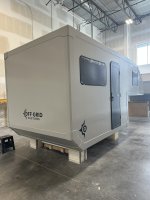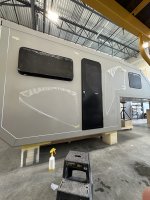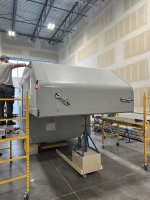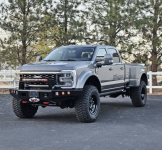Allysonoverland
Member
After 5 years of vanlife with my dog, I finally decided it was time for a new build.
My travel style has changed a lot over the years. Instead of staying local in the lower 48, I've now driven to Alaska and Mexico, and hope to drive the PanAmerican some day. I'm ready for a rig that can go further, stay longer, and is large enough to adapt as friends fly in to visit or my family grows in the future.
After a ton of research, I’m knee-deep in building a custom expedition truck / composite shell camper.
I’m very much a want-to-know-everything type of person when it comes to any investment I’m making - so I’ve spent endless hours on forums and Facebook groups gathering information that helped me determine the best decisions for this project.
I’m starting this thread to share the knowledge I’ve gathered and hopefully help the next person on this journey save a little time and stress. By no means do I pretend to be an expert on ANY of this - a lot of this stuff comes down to personal preference, budget and your needs. But if you’re interested in a thread that compiles a bunch of answers to questions about these custom composite camper builds, all in one place - you’ve found the right thread.
So - let’s start with the basics. Why go custom? Well, after years on the road and off-grid, I realized that none of the traditional truck campers really fit my wish list - new or used. I've become very particular about things and the systems I want in my "home" on wheels.
I considered modern innovative campers like the NuCamp Cirrus 920 which comes off-grid ready.. But the cost of mass manufactured, pre-built truck campers are steep these days. And by the time I’d customize an older one to suit my wants and style, I might as well just start from scratch.
I love the design process and wanted to create something that actually works for me, rather than making compromises on layouts and doing renovations.
Additionally, I’ve worked in composites (non-truck camper related) for nearly 6 years. So I know a thing or two about the panels typically used in these builds - and find them to be superior to most options on the market. Composite shells, when done right, are lightweight, insanely well insulated, and impervious to water.
So, in the end, a custom build just made the most sense for me. YMMV.

My travel style has changed a lot over the years. Instead of staying local in the lower 48, I've now driven to Alaska and Mexico, and hope to drive the PanAmerican some day. I'm ready for a rig that can go further, stay longer, and is large enough to adapt as friends fly in to visit or my family grows in the future.
After a ton of research, I’m knee-deep in building a custom expedition truck / composite shell camper.
I’m very much a want-to-know-everything type of person when it comes to any investment I’m making - so I’ve spent endless hours on forums and Facebook groups gathering information that helped me determine the best decisions for this project.
I’m starting this thread to share the knowledge I’ve gathered and hopefully help the next person on this journey save a little time and stress. By no means do I pretend to be an expert on ANY of this - a lot of this stuff comes down to personal preference, budget and your needs. But if you’re interested in a thread that compiles a bunch of answers to questions about these custom composite camper builds, all in one place - you’ve found the right thread.
So - let’s start with the basics. Why go custom? Well, after years on the road and off-grid, I realized that none of the traditional truck campers really fit my wish list - new or used. I've become very particular about things and the systems I want in my "home" on wheels.
I considered modern innovative campers like the NuCamp Cirrus 920 which comes off-grid ready.. But the cost of mass manufactured, pre-built truck campers are steep these days. And by the time I’d customize an older one to suit my wants and style, I might as well just start from scratch.
I love the design process and wanted to create something that actually works for me, rather than making compromises on layouts and doing renovations.
Additionally, I’ve worked in composites (non-truck camper related) for nearly 6 years. So I know a thing or two about the panels typically used in these builds - and find them to be superior to most options on the market. Composite shells, when done right, are lightweight, insanely well insulated, and impervious to water.
So, in the end, a custom build just made the most sense for me. YMMV.





